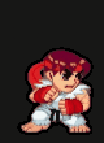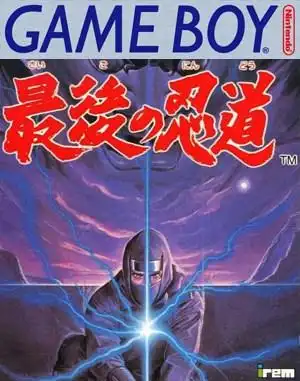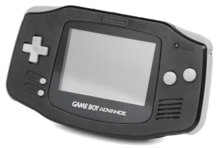Let's talk about a game that punched above its weight in the late 80s: Ninja Spirit. Developed by Irem, this side-scrolling action title first hit arcades in 1988 before making a memorable splash on home consoles, most notably the TurboGrafx-16. It's a game that sticks with you, a potent mix of stylish presentation, challenging gameplay, and pure retro gaming ninja coolness.
For many retro gamers, the TurboGrafx-16 port of Ninja Spirit is the definitive version. It even garnered a perfect 10 from EGM back in the day, a rare feat that cemented its status as a must-play title on the system. But beyond the accolades, what was it about this game that captured imaginations?
The Legend of Ninja Spirit: Arcade Roots, Home Glory
While Ninja Spirit originated in the smoky arcades of 1988, its true legacy for many lies with its console translation. The TurboGrafx-16 version managed to capture the essence of the arcade experience while offering a slightly more forgiving difficulty mode (thank goodness!).
You play as Tsukikage (Moonlight), a ninja seeking vengeance after his father is tragically killed by a mysterious creature. The setup is simple, classic ninja fare, but it provides the perfect backdrop for the fast-paced, stylish action that follows.
Gameplay: What Made it Tick?
Ninja Spirit threw you into the action quickly. Armed with various weapons like a sword, shurikens, and bombs, you leaped and slashed your way through visually impressive stages. Two key features made the gameplay stand out:
- Mirror Images: Collecting power-ups allowed you to summon up to two mirror images of yourself. These clones mimicked your movements and attacks, effectively tripling your firepower and acting as a temporary shield. It felt incredibly powerful and looked awesome on screen.
- Floaty Physics: The jumping and movement had a distinct, almost floaty feel. This took some getting used to but allowed for precise platforming and dodging once mastered.
Enemies came at you from all angles – other ninjas, strange creatures, and massive bosses. The screen could get hectic, demanding quick reflexes and strategic use of your abilities.
The Brutal Truth: Difficulty Spikes
While the early stages of Ninja Spirit offer a thrilling, manageable challenge, the game is infamous for its difficulty curve. What starts as tough-but-fair quickly escalates into a brutal test of memorization and endurance.
Later levels introduce one-hit deaths from many enemies, forcing pixel-perfect movement and weapon usage. The absolute peak of this frustration? The infamous vertical descent stage near the end. Falling through a pit filled with flying, one-hit-kill ninjas required near-perfect memorization of enemy placement and felt less like a skill challenge and more like a cruel joke. Beating this section, and the final boss that immediately follows, was a badge of honor for any retro gamer.
Visuals, Sound, and Atmosphere
For its time, Ninja Spirit boasted impressive visuals. Character sprites were large and detailed, especially the bosses (the first boss, a giant six-armed demon, was particularly memorable). The backgrounds were atmospheric, ranging from dark forests to fiery caverns, creating a distinct, over-the-top ninja world.
The music was fittingly dark and mysterious, enhancing the ninja theme, even if the tracks weren't always the most memorable melodies from the era. The sound effects were satisfying, particularly the swoosh of your sword and the clang of hitting enemies.
Is Ninja Spirit Worth Revisiting Today?
Absolutely! Despite its punishing difficulty spikes, especially in the late game, the core action and stylish presentation of Ninja Spirit still hold up. The feeling of cutting down hordes of enemies with your mirror images is incredibly satisfying.
While finding original TurboGrafx-16 hardware and cartridges can be a quest in itself, emulation provides an accessible way to experience this classic. Fire it up, maybe try the TurboGrafx mode for a few extra hits, and prepare for a challenging trip back to the golden age of arcade action. It's a gem that deserves to be remembered, even if that memory comes with a healthy dose of controller-throwing frustration!
FAQ
Q: Is Ninja Spirit available on modern consoles? A: As of now, Ninja Spirit is not widely available on modern digital storefronts or retro collections. Emulation is currently the primary way most people can play it.
Q: How difficult is Ninja Spirit? A: It starts moderately challenging but becomes very difficult in later stages, featuring one-hit deaths and sections requiring precise memorization. The end-game is notoriously brutal.
Q: Which version is better, arcade or TurboGrafx-16? A: Both are great, but the TurboGrafx-16 version is often preferred by home players due to its slightly more forgiving difficulty mode and excellent port quality.
Final Thoughts
Ninja Spirit is more than just another side-scroller; it's a piece of retro gaming history. It represents a time when arcade action was king, and home consoles were just starting to deliver experiences that rivaled the coin-op machines. If you're a fan of challenging retro action or just curious about a highly-rated TurboGrafx-16 title, give Ninja Spirit a shot. Just be prepared for a fight – this ninja doesn't pull any punches!


